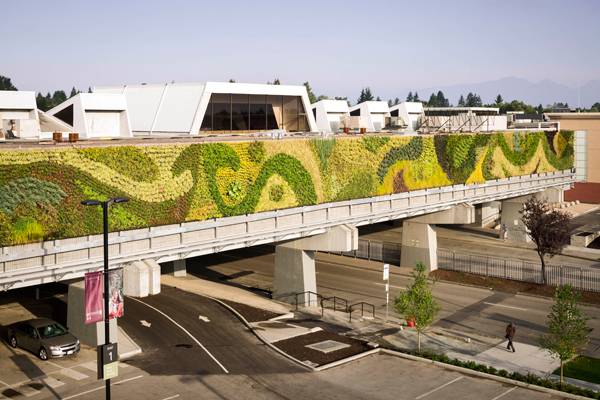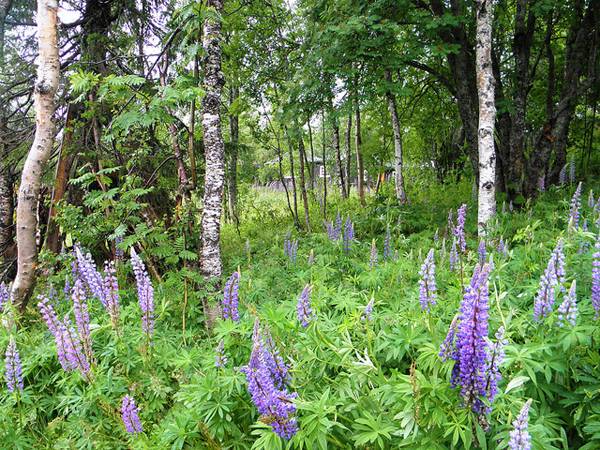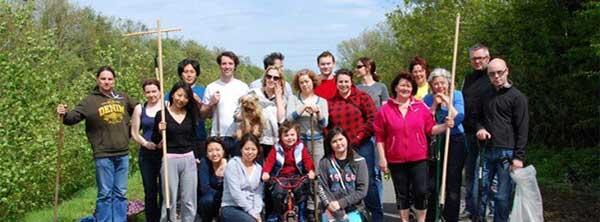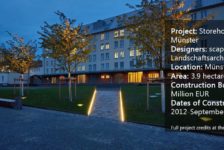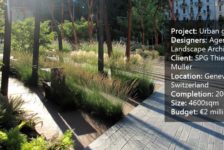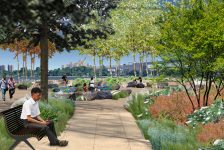So you’ve read through what we’ve got, maybe you think you could do just as good or maybe you think you could do better, here at Landscape Architects Network we’re always searching for new talent but more importantly we’re searching for individuals who have ambition and want to be part of something great. So don’t just sit there, don’t just be a critic, get typing, contact us and apply to become part of our growing writing team, make a difference, be the voice, get involved and get active. We’re waiting for you! The LA Team Check out this sample article below: Joseph Clancy, emerging expert on biophilia looks at what makes a biophilic city. To what degree must a city engage in biophilia to be classed as a “biophilic city”? Timothy Beatley describes a biophilic city as being “partly defined by the qualities and biodiversity present and designed into urban life, but also the many activities and lifestyle choices and patterns, the many opportunities residents have to learn about and be engaged directly in nature, and the local institutions and commitments expressed, for instance, in local government budgets and policies”. So how do we classify a city as a biophilic city?
According to the works of Timothy Beatley, Biophilic Cities can be indicated by the following qualities:- Biophilic cities have abundant nature in close proximity to large numbers of urbanites
Green infrastructure programs, parklets & a high percentage land cover of green space would be steps towards fulfilling this aspect of a biophilic city. New York City qualifies as a biophilic city in this regard by PlaNYC’s goal of a public green space within a 10 minute walk of every resident by 2030, while Seattle P-Patch program aims for one community garden per 2,500 city inhabitants!

The Highline is a great example of a planting scheme increasing biodiversity in an urban area; credit: shutterstock.com
- In biophilic cities, residents feel a deep affinity with the unique flora, fauna and fungi found there
Incentive, education and encouragement from city authorities are necessary to catalyze this goal. It measures not just the environmental values of inhabitants, but their knowledge of local and native species. In New Zealand, the city of Wellington also has over sixty community conservation groups! In the last two years alone, volunteer environmental groups have performed 28,000 hours of service on Wellington’s 4,000 hectares of nature reserves. While in Oslo, Norway, over 81% of inhabitants had visited the city’s surrounding forests in the last year, proving residents appreciation of the natural landscape.
- Biophilic cities are cities that provide abundant opportunities to be outside and to enjoy nature
Urbanization causes severe fragmentation of habitats and nature, with land value at a premium, resulting in little room for green space. Well connected green spaces and green corridors can counter this problem, easing accessibility for urban inhabitants. Singapore has an extensive park system, integrated by 200-kilometers of Park Connectors, in the form of elevated walkways. Oslo, Norway is perhaps the leader in this category however, with an estimated 94% of the city’s residents living within 300 meters of a park! Anchorage, Alaska has 1 mile (1.6Km) of natural walking trails per 1,000 residents. The trails are multi use and seasonal, offering everything from hiking to skiing.
- Biophilic cities are rich multisensory environments, where the sounds of nature are as appreciated as much as the visual or ocular experience
The integration of natural spaces and ecological corridors into the urban fabric can create the conditions necessary for multisensory, nature rich environments. Implementing a Noise Reduction Plan or reducing levels of vehicular transport, would create “quiet zones”, with noise levels below 50 decibels (dB). Oslo, Norway is attempting an initiative of daylighting all eight of the city’s rivers. This will form part of the Akersleva, a combined green and blue infrastructure corridor, connecting the city centre inhabitants with nature in the very heart of the city, with 14 quiet zones planned within the corridor.

Akerselva goes into tunnel at Vaterlandsparken, Vaterland / Grønland, Oslo. Credit: Helge Høifødt, CC 3.0
- Biophilic cities invest in the social and physical infrastructure that helps to bring urbanites in closer connection and understanding of nature
Investment in biophilic projects is an excellent indicator of a biophilic city. Timothy Beatley identifies 5% of a cities budget dedicated to biodiversity and at least 1 current biophilic project in operation as indicative of governance in a biophilic city. Portland, Oregon, exceeds this and has invested heavily in social & green infrastructure, with Portland having the highest parks per-capita acreage in America. While Singapore’s N’Parks have an incentive program, entitled Skyrise Greenery, for green roofs & living walls, offering up to 75% of the cost.
- Biophilic cities place importance on education about nature and biodiversity, and on providing many and varied opportunities to learn about and directly experience nature
Education can result in reinforcing positive feelings about nature and encouraging sustainable living among the general population. In Limerick City, Ireland, several environmental groups are working with the support of the city council to educate the city’s population on biodiversity and native wildlife species. Urban Tree Project and Limerick City Biodiversity Network have engaged the local population with nature, while providing guided walks, lectures and online resources to educate the city’s inhabitants on the importance of biodiversity.
- Biophilic cities take steps to actively support the conservation of global nature
With cities being the epicentre of governance, innovation, employment and population, they have a necessary role in the conservation of nature on a regional, national and international scale, given their ecological footprint and negative impacts upon the environment. Such measures include; set aside of land, designation for protected sites, the creation of a biodiversity action plan and focus on compact development. In the city of Nagoya, Japan, 10% of urban land cover is set aside to be left in an unmanaged wild state as nature preserves. Below: The Nature of Cities TRAILER While Phoenix, Arizona has taken this a step further by purchasing over 17,000 acres of natural desert for nature conservation, to help mitigate the negative effects of Phoenix’s urban sprawl. Then there is Vitoria-Gasteiz, in Basque country, encircled by a green belt to restrict encroaching development and to protect the internationally important restored wetland, the Salburua. However, the city still intends to create the Anilla Verde Interior—“the interior green belt”! These indicators focus on the protection, enhancement and introduction of nature into our cities, while encouraging interaction with nature by the city’s inhabitants through the process of environmental education and habitat restoration. With more than half of the world’s population living in urban centres devoid of nature, biophilic cities are no longer a choice. The benefits & criteria have been discussed, in my next article I will countdown the Top Ten Biophilic Cities. Recommended reading: Biophilia by Edward O. Wilson Design with Nature by Ian L. McHarg Article written by Joseph Clancy
This article was originally submitted to Landscape Architects Network
Published in Blog


